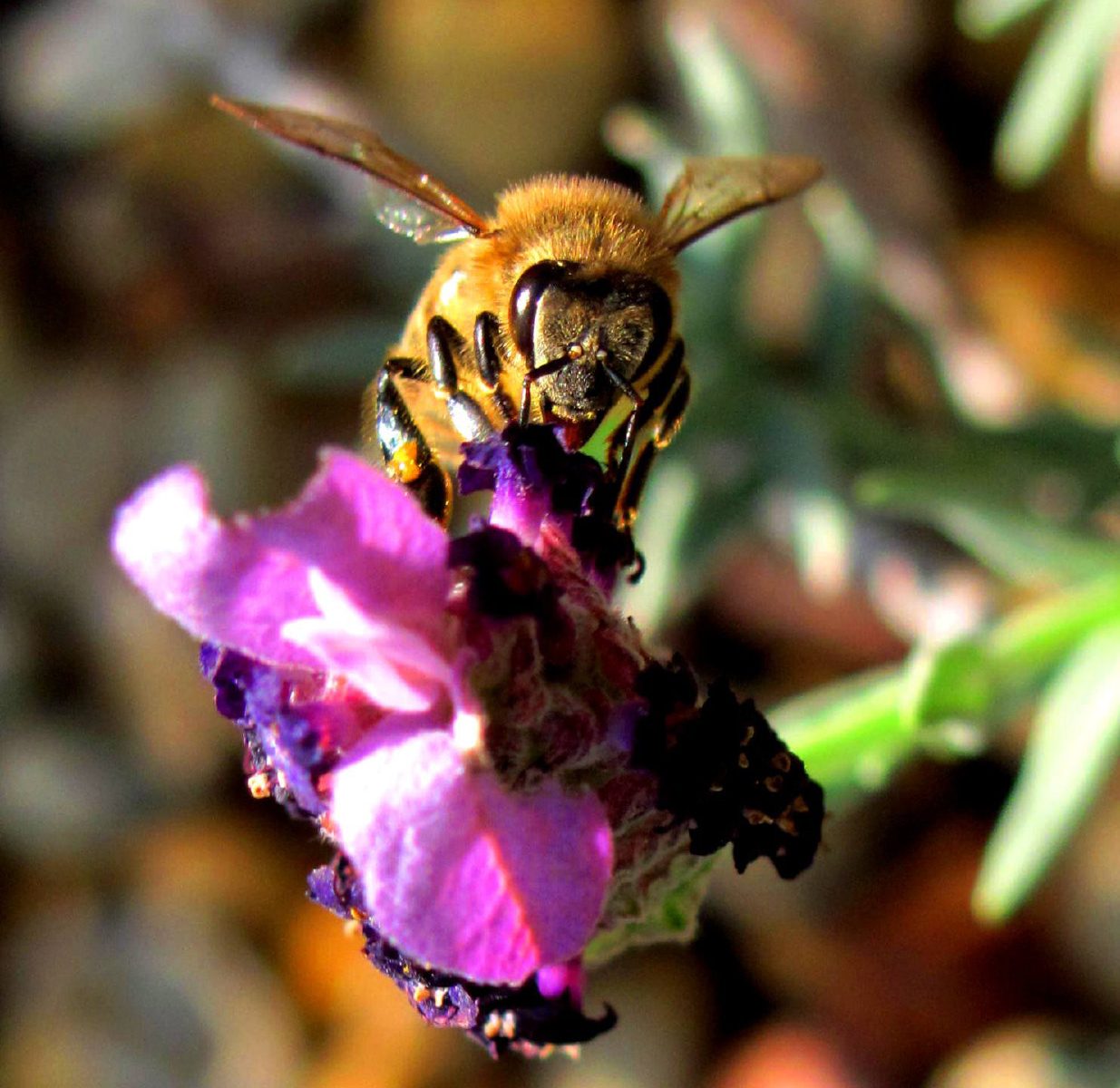What better than a hobby that makes a real contribution to local bio-diversity as well as rewarding you with the very best honey you will ever taste – your own! Welcome to the gentle art of bee-keeping.
Who’s Who in the Hive?
To get to grips with what’s involved you first have to understand who’s who in the hive. A colony of bees contains three types of bee, a single queen, a few hundred male bees or drones and up to 50,000 worker bees – which are all female.
The queen bee is larger than a worker bee and can live up to three years during which time she will lay over half a million eggs. She starts off life as just another egg, but if the worker bees decide to feed the egg royal jelly it develops into a queen.
The only purpose of the male bee, known as a drone, is reproduction. They are therefore tolerated during the spring and summer but come the autumn they are driven out of the hive so they don’t spend the winter eating valuable honey.
The vast majority of the bees are worker bees, each individual being a selfless member of a highly developed society. The number of bees in a hive and the life expectancy of the individual depends on the time of year. During July, the key month for flowers, there will be up to 50,000 worker bees in the hive all making daily flights to collect nectar and pollen thereby exhausting themselves and they will only live about six weeks.
But during the winter months the number of bees in the colony reduces to around 10,000. These bees rarely leave the hive and survive up to six months by eating the honey collected and stored by their busy sisters during the summer.
The Work of the Beekeeper
However experienced you are at keeping bees, each season is different and you never stop learning but in essence here’s what’s involved in a typical year.
✿ In the spring, as soon as you can be outside without a jumper, open up your hives for a thorough examination. Find your queen (if you’re smart you will have marked her with a tippex blob on her thorax to make her stand out), check she is laying eggs and make sure there is still enough honey for the bees to eat. Then give the hive a good spring clean.
✿ From late April to July the number of bees in the colony will be building up rapidly, and you need to check the hive weekly to make sure there is plenty of room for egg-laying and storing honey, otherwise they may well swarm. This is when the queen, sensing that space is running out, leaves the hive with half the worker bees and goes off to form another colony. The bees that are left behind, realise they are queenless and feed one of the larvae in the hive with royal jelly and so a new queen will emerge. Although the colony will survive it means that half your workforce has left home and the amount of honey collected in that year will be much reduced.
✿ By August – unless you live near heather moors – most flowers will be over and at this point you can collect your honey. In a good year you can expect up to 40lb per hive!
✿ In the autumn you need to replace the “stolen” honey by feeding your bees with a sugar solution. Then, having protected the hive against unwelcome winter visitors like mice and woodpeckers, you can shut up shop and retire inside for the winter.
So how do I get started?
If you think you’d like to become a beekeeper I strongly advise you to contact the local branch of the British Beekeeping Association (www.bbka.org.uk). Many run courses for beginners and will often help you source your first bees. And as a beginner I can’t stress enough how important it is to make sure you start out with gentle bees from a respected source.
When it comes to clothing, go for maximum protection. An all-in-one suit with veil, together with a good pair of gloves and a stout pair of wellies, will cost less than £150 and give you the confidence to open up that hive for the first time.
You will also need two basic tools. A smoker and a hive tool. The smoker is used to puff smoke around the hive as you work which calms the bees. Keeping this alight is in itself a major skill and everyone will have their favourite fuel – personally I swear by egg boxes. A hive tool is used to prise apart all the different hive parts. Beyond that there are literally hundreds of gadgets and gizmos to choose from and if you do decide to take up beekeeping, your relatives will never again be stumped for a birthday present!
- words: Jane Howard
You may also like
Go with the Flow
Sue Whigham shares some valuable new-to-gardening advice I’m sure that by now we should be used to the rain but I’m not entirely sure that we are. We had a dry, sunny day the other day and how everybody’s mood...
Farm Fables
Jane Howard gets to the bottom of why so many ponds have disappeared across the High Weald I have a new passion, almost an obsession, it’s about ponds. And there’s a distinct possibility I might become a bit of a...
Hedge Issues
Sue Whigham takes a meander along nature’s verdant and vital corridors Recently the BBC’s Today programme carried a feature about England’s hedgerows which created a lot of interest among listeners. On the strength of that, Martha Kearney interviewed one of...















